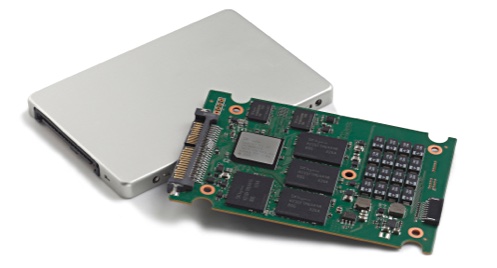SK hynix is dipping a toe into the enterprise SSD pool with an 8TB NVMe drive; the PE6000.
This, SK hynix’s first NVMe eSSD, is built with 72-layer 3D NAND formatted in TLC mode (3bits/cell). It comes in U.2 (2.5-inch drive) and M.2 formats with the M.2 version capped at 4TB.
The Korean semiconductor firm is keen to emphasise the drive uses flash made in its own fab and incorporates a self-made controller too. Vertical integration rules, OK!
ThThe PE6000 is with OEMs for qualification and mass production is scheduled next year.

Today we know that random write IOPS are up to 160,000, and random read IOPS 620,000, with sequential read bandwidth being 3.2GB/sec. The average latency number is 95us. That’s it performance-wise – SK hynix has not yet revealed sequential write bandwidth, and endurance.
We do know it uses PCIe gen 3 with 4 lanes and NVMe v1.3a and there are 8 NAND channels. Blocks & Files will update this story if we receive more information.
Bit part
The PE6000 is optimised for low power consumption, according to SK hynix, with the supplied figure being 160,000 random write IOPS at less than 14W.
Some 8TB enterprise SSDs are available from Micron (9300 MAX), Samsung (NGSFF NF1), Toshiba (CD5) and Western Digital (Ultrastar DC). All but the Samsung NGSFF and Western Digital Ultrastar DC have sequential read bandwidths greater than the SK hynix drive.
The 7.68TB Ultrastar DC cranks sequential read bandwith up to 2.77GB/sec but its power draw is typically less than 10.75W. This is better than the SK hynix drive.
Most of the other suppliers have lower random write IOPS numbers. SK hynix’s 160,000 random write IOPS number is exceeded only by Micron’s 9300 MAX which hits 310,000 and has a maximum capacity of 12.8TB. A PRO version of that drive reaches a monster 15.36TB but its capacity comes with lower IOPS performance: 150,000 random write IOPs.
Only the Micron 9300s have higher random read IOPS, at up to 850,000, than SK hynix’ PE6000, while the Toshiba and Western Digital drives have lower numbers; 500,000 and 363,750 respectively.
Writer’s block
The SK Hynix drive is for write-intensive or mixed use where its random write IOPS performance stands out. Based on what we know so far, Western Digital’s Ultrastar DC could be more power-efficient for roughly equivalent performance.
SK hynix said it has a 16TB version coming by the end of the year, which is made from denser 96-layer NAND. This may perform better than today’s 72-layer product.







